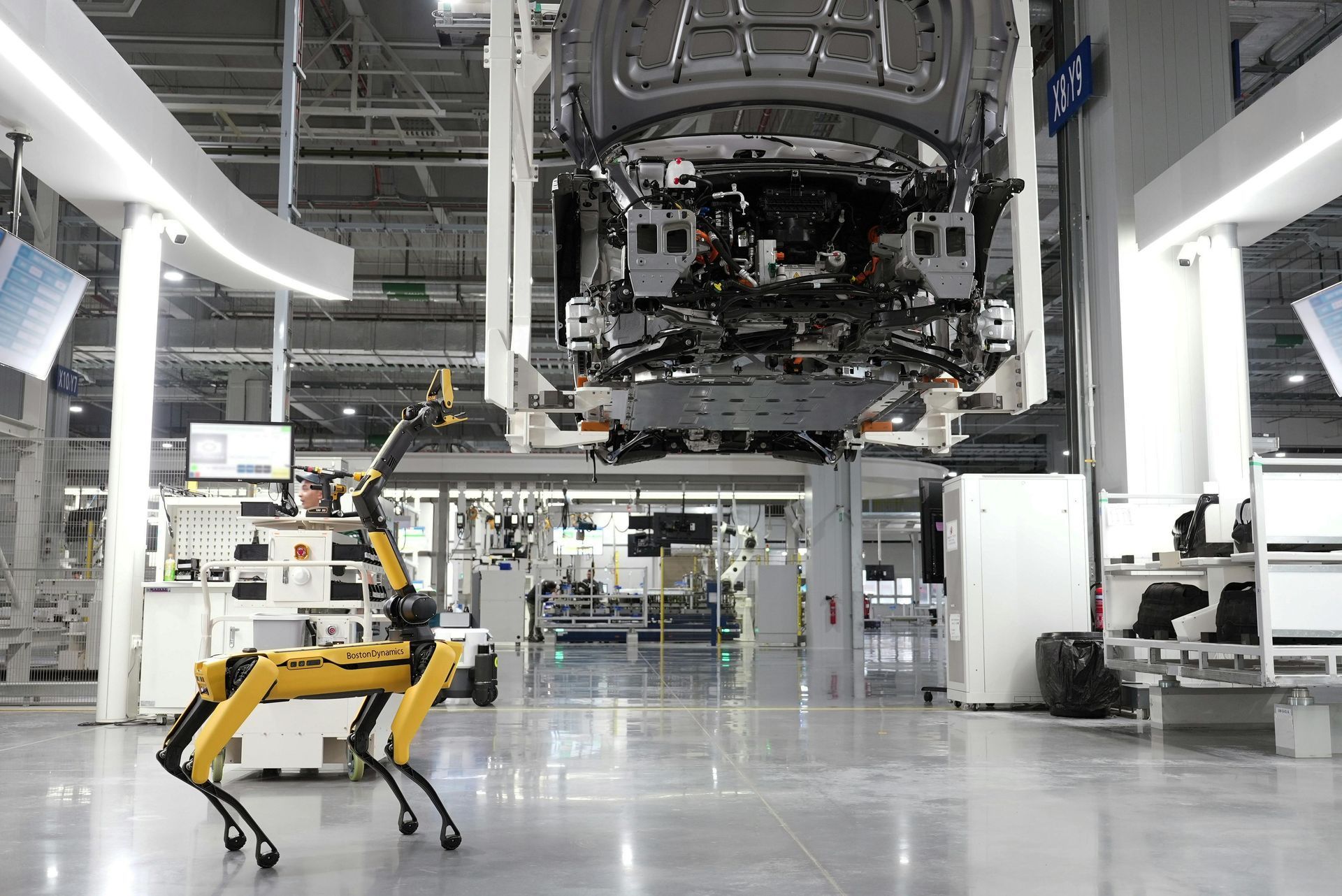Share
I remember it being a treat to have breakfast with my grandfather, Harry Torczyner. We’d have soft boiled eggs and he’d read the paper—or several. He was an international lawyer, spoke seven languages, had one law degree in Europe and received another law degree in the US after fleeing Belgium when the Nazis started bombing. All I could think about when we had breakfast was that with a 57-year head start on reading the newspapers from different countries every day, I’d never catch up to his knowledge.
Just a couple of decades ago, being older gave you a competitive advantage in business. You had seen more and therefore had more data points for pattern recognition and could make better decisions faster than the competition. Being older also gave you more years to network, learn about people, develop trusted relationships and access resources to take action on decisions. Today, that competitive advantage of age is changing fast and there’s a best of both worlds, if you read on.
Peter Drucker Would Approve of Leveraging More Information
It’s no secret that the volume and types of information are exploding, while in parallel analytic processing power is growing at an exponential rate. Every day more than 92,000 articles are published on the web, including scientific and business content that would have been reserved for exclusive audiences via journals and conferences.
Governments are digitizing massive data sources so you can access them at scale. Billions of retail and business consumers provide great free content online by posting information suitable for scraping and mining. You can find almost anyone for primary research or 1:1 commentary. Corporations have massive data stores that are now accessible for meta-analysis and granular analysis. As for processing power, our ultra light laptops can run highly complex analyses thanks to cloud-based analytical and data mining software. Specialty programs let you mix and match data types for analysis—matching spreadsheets and video clips.
It can be a data deluge and distraction. It can also help the most seasoned veteran or youngest executive apply their expertise with greater speed and certainty than ever before.
As an example, a few months ago, an executive with a good reputation and his largest investor came to us and asked for advice positioning their company for sale.
From a purely outside perspective, within two weeks we could demonstrate the company’s positioning with customers and competitors as well as detailed weaknesses in the operation. Further, we could give them a concrete assessment of competition in the seven markets they planned to enter and forecast the headwind by city. We used one experienced director and three different teams each with a specialization in researching and analyzing different data streams. We brought more research, data and analytic processing power for pattern recognition to bear than their company could or any one person ever could.
The mix of resources generated the insights that were unknown and highly relevant to the chairman and lead investor. Within two weeks we’d gotten enough information to have valid expertise on the company. It doesn’t mean we knew everything—the average age of our team (exclusive of me) was 30, but it does mean that we could be a powerful ally to an executive, in this case the CEO, with more than 30 years of experience. Armed with the data and pattern recognition resources, he knew exactly what do to and in having this ability early, could be a far more effective executive.
If Peter Drucker were alive today, he’d certainly approve of executives using more data to identify where to spend their time effectively.
Harnessing the power
This scene is common even with executives very in tune with their marketplace. Whether you’re in the driver’s seat for the last three years or thirty years, I consistently see four areas where executives can bring more data, analysis, and pattern recognition resources to bear, allowing for greater impact with less risk: Identifying growth, improving operations, facilitating change being held up by “experience bias,” and identifying safe zones to experiment with new ideas.
When it comes to identifying and quantifying growth, those who can access research and more rapidly bring it to bear will see changes and inflection points sooner, allowing them to point resources at growth opportunities. What used to take nine months of work in the 90s with only a reasonable level of certainty can now be done in 1/3rd the time with a high level of conviction. The earlier you focus on market and customer growth, the better the profit margin and better chance of success.
A second area where data provides greater insights is in day-to-day operations to understand the true drivers of profit and cost. Leaders running an operation day to day are focused on delivery of goods and services and look for the consistencies to manage people, because people work better with a routine.
When you can get beneath the averages to analyze productivity of all of the resources required to satisfy customers profitably, you inevitably identify great gaps—which means great opportunities. Those looking from the outside in at the data can leverage more data than the human mind can compute, identify with less bias the consistencies and inconsistencies that identify profit gaps that might not otherwise be seen.
Once you know the scale of these opportunities, you can get creative about exploiting these gaps, deliver big results in utilization, pricing, profitability and use of capital. But if you can’t get the information to see the opportunities—you can’t challenge your resources to capitalize on those opportunities.
Every executive knows that change is hard, and convincing your team to change is harder. Given the abundance of data, it is easier than ever before to get people around the table, hear their opinions and resistance to change, and simply ask, “Has anyone pulled the data?” Because as much as you can debate, and disagree, chances are there is a way to pull a lot of information and agree as to how to analyze it, process it together, and come to a cohesive conclusion that gets people going in the same direction.
Now once you even agree on the new direction, question arise like how do you take a risk without the worry of large failure and loss of momentum? How will you lead your team into the great unknown? There goes that big data, pattern recognition bringing you a solution. Given the large volume data in most company systems (even old messy ones), one can back test patterns of customer behavior and operating situations to isolate small groups that are representative of larger groups. It’s easier, faster and cheaper to lead a new initiative when you can test it small scale and have the confidence that the test group represents larger potential.
It isn’t lost on me, that in this case I suggest executives get smart about purposely not knowing answers, and focusing entirely on how to be smarter about asking questions. In a fast moving market answers are short lived, while good questions are constant. At least that’s true in my experience.
Which dovetails nicely to conclusion. Does any of this access to more data and analysis mean you don’t need the industry expertise or operational chops to make something happen? Or that there is no value in experience that comes with age? Not at all. You still need operating teams to run a business and you need to lead teams to make things happen.
The best way to do this today is is bring them along in your thinking about harnessing the power of information to make the entire organization more data driven, and faster at finding opportunities and moving to capitalize on them.
My Grandfather’s Career, Compared to My Career
My grandfather was many things, including irreverent. He insisted we call him Harry rather than grandpa, lest someone think he was old enough to be a grandfather. He wrote letters to the building management calling them communist because they didn’t want him putting great art in hallway outside of his office. He ran a boutique international advisory law firm where his encyclopedic knowledge, experience and intellect was the value—and it was great value.
This was right for the times and it served him well and me well as he provided for our family. He wouldn’t expect me to do it his way. Over the past 20 years, I’ve taken an approach for the new millennium, recruiting a lot of great people with different research and analytic strengths to team up and collectively gather more data and generate more insights than any one person could generate on their own. While I’m pretty good with pattern recognition and have more than 20 years of in depth research and analytic expertise, of this I am sure: Our team here working together, on any day—can kick my ass in getting to an answer.
So I’ve become comfortable with not knowing as much personally, but having access to far more when I need it. For this executive and grandson—it would still be great to have that breakfast again (Harry would be 114). And though I may not have the same languages or encyclopedic knowledge of history, art and law, I could do a pretty decent job of keeping up, and certainly more than fair job of having been able to transfer knowledge to all of our clients over the years.
I don’t know that I’ll ever have more content stored in the noggin than Harry. But I may be getting closer at a younger age, at being able to share relevant content with more people for their dealings.
It’s a new millennium for sure—and in addition to Harry being OK with this, I’m betting a few other executives are too.
And as for knowing more than my grandfather Harry. I don’t know that I know more, but I think he’d give me credit for knowing a thing or two—or at least who to ask.






